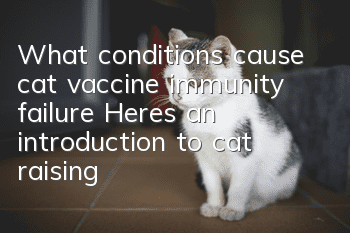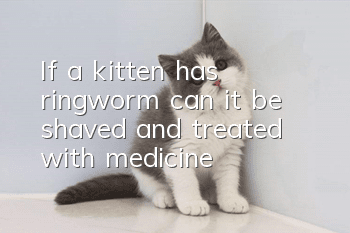What are the causes of red eyes in cats? Don’t delay!

In normal times, cats’ eyes are very cute
What are the reasons that cause cats’ eyes to turn red? Don’t delay! Cats’ eyes come in many colors depending on the breed. Cats have different colors. Eyes of different colors also bring great fun to our breeding. For example, the eyes of black cats are generally green, and the eyes of long-term white cats are blue. It has been scientifically proven that iris pigmentation and blue light reflection determine a cat’s eyes. color. However, cats’ eyes may also experience some abnormalities, such as turning red, which may be a sign of eye disease.
Red eyes in cats is also a common symptom of cat eye diseases. We can also see many owners coming to the hospital for treatment because of the symptoms of red eyes in cats. In fact, there are many causes of red eyes in cats. There are many diseases. Eye redness can be roughly divided into two types: "redness on the surface of the eyeball" and "redness inside the eyeball." Redness on the surface of the eyeball can be roughly divided into two types: redness caused by congestion and corneal angiogenesis. . No matter how it is classified, it is easy to determine whether the redness is on the surface of the eyeball or inside the eyeball just by visual inspection. However, there are many different diseases that cause red eye symptoms, and correct judgment is required. Moreover, it is not limited to distinguishing between the surface of the eyeball and the inside of the eyeball. If the diseased site can be further distinguished in detail, the cause of the disease can be naturally determined.
1. Congestion
Congestion is caused by external stimulation or inflammation, which increases the amount of blood flowing through the small blood vessels and capillaries on the conjunctiva. . Congestion is divided into conjunctival congestion and ciliary congestion. The distinction between the two can be an important basis for determining the cause of congestion. Conjunctival congestion can disappear after the administration of vasoconstrictor drugs (epinephrine, etc.), while ciliary congestion cannot disappear after the use of vasoconstrictor drugs, which can be identified accordingly.
1.1 Conjunctival congestion
Characteristics: Superficial congestion, bright red, and the direction of blood vessels can be clearly seen.
Diseases that may cause this symptom:
①Conjunctivitis (bacterial or viral conjunctivitis, etc.)
Conjunctival contact smear microscopy and Microbial culture identification of ocular secretions is used to confirm the diagnosis. In conjunctivitis, you can generally see swelling of the eyelids on the nasal side, flushing and congestion of the conjunctiva, blindness, tears, and discharge of serous and purulent secretions from the inner corners of the eyes. The affected cat scratches the eyes with its front paws from time to time, causing pain and itching. Over time, conjunctival hyperplasia, adhesion, and secondary keratitis can be seen.
② Mild corneal injury
Can be diagnosed through tear volume measurement, corneal and conjunctival staining test (fluorescein staining, rose red staining), slit lamp examination, blood test (suspected of endocrine abnormality) etc. for diagnosis.
1.2 Ciliary congestion
Characteristics: It is deeper than conjunctival congestion, purple-red in color, a single blood vessel is not obvious, and is generally heavier than conjunctival congestion.
Diseases that may cause this symptom:
①Severe corneal injury
The diagnostic method is the same as conjunctival congestion.
②Uveitis
Anterior chamber flare can be confirmed through blood tests (routine blood test, CRP value test, antinuclear antibody test, antiglobulin test, viral antibody titer Examination and other diagnosis.
③Glaucoma
Diagnosis by measuring intraocular pressure and checking the anterior chamber angle with gonioscopy.
④Retinal detachment
< p>Diagnosis is through fundoscopy and eyeball ultrasonic examination.⑤Intraocular tumors
Diagnosis is through slit lamp and eyeball ultrasound examination.
2. Corneal neovascularization
Another main cause of eye redness is corneal neovascularization. The cornea itself has no vascular tissue. Through the metabolism of corneal epithelial cells and the collagen of the corneal stroma, Protein fibers maintain a regular layered structure and maintain its transparency.
Features: Angiogenesis from the limbus to the corneal epithelium can be seen, which is caused by damage to the corneal epithelium due to various reasons.
Diseases that may cause this symptom:
①Dry eye syndrome (KCS, corneal epithelial damage caused by decreased tears)
②Meibomian gland cyst or eyelash ectopia, etc. Chronic irritation of the cornea
③Mild scleritis
3. Excessively long eyelashes
Eyelashes inverted eyelashes stimulate redness of the eyes , this is also a common reason. If you usually see long eyelashes, you can consider trimming them. If the eyelashes are red, put pet eye drops on them. It will be fine in a few days. It’s not a serious problem.
4. Foreign body redness
There is a foreign body in the cat's eye that stimulates the eye to become red. The cat is playing naughtyly outside and the foreign body enters the eye, and the symptom is redness. For treatment, just use ordinary eye drops for care. Or flush the cat’s eyes with physiological saline.
When the cat’s eyes are red, we should also pay attention to other symptoms, such as whether the cat sheds tears and excessive eye feces, which will help us treat Make judgments about cat diseases.
- Which ragdoll cat is better, male or female?
- Do Ragdoll cats change color like Siamese cats?
- Will male cats still develop gills after being neutered?
- Can desert cats be kept at home?
- Why do Ragdoll cats like people so much?
- How to tell whether a 40-day-old kitten is a long-haired cat or a short-haired cat?
- How many milliliters of water does a cat drink a day?
- How to correctly educate cats to catch various bugs in the house
- What should cats eat if they are deficient in calcium after giving birth?
- How many months is a hairless cat pregnant?



